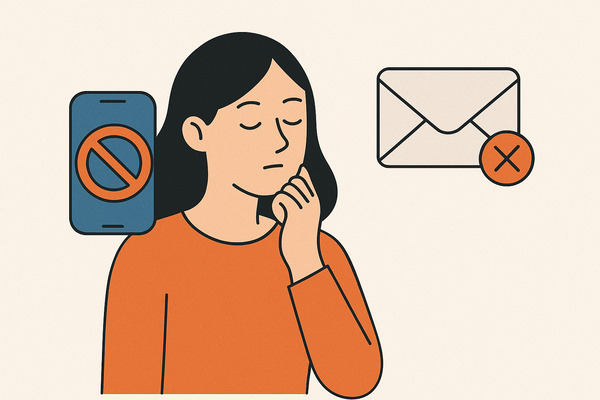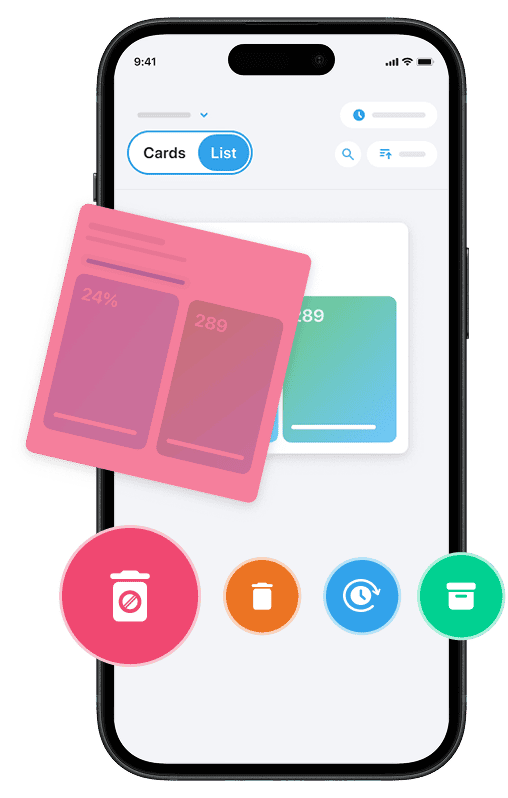In today’s hyperconnected world, setting clear digital boundaries is essential to protect your focus and maintain a healthy relationship with technology. Whether it’s managing screen time, controlling the use of digital devices, or defining acceptable interactions on social media accounts, establishing these limits creates a balanced digital life that supports both your mental health and overall well-being. 10 digital healthy habits can help improve your focus, sleep, and overall health.
By learning how to set effective technology boundaries, you can reduce distractions, prevent burnout, and ensure that your time spent online or with your partner and kids remains intentional and safe.
This is the foundation for fostering healthy digital habits and protecting your time for both work and personal life.
Another simple way to create healthy digital boundaries is by decluttering your inbox — removing all the unwanted and spammy emails that don’t serve you. Tools like Cleanfox can help you do that effortlessly.
The Importance of Establishing Digital Boundaries
Why Digital Boundaries Matter
Digital boundaries are vital because they help you regain control over how you engage with technology and protect your mental health and overall well-being. Without these limits, the nonstop notifications, messages, and social media updates can create an “always on” mentality that increases stress, anxiety, and mental overload. Setting boundaries allows you to reduce distractions, safeguard your focus, and improve productivity both in your personal life and at work.
Furthermore, clear technology boundaries help you maintain a sense of autonomy and privacy, easing the pressure of constant connectivity and fostering a safer, more intentional relationship with your digital devices and online presence.
The Impact of Boundless Digital Connectivity
When you don’t set digital boundaries, you risk letting technology consume your time and attention, leading to negative effects like disrupted sleep, heightened stress, and diminished physical activity. The overload of digital content—especially on social media—can reduce your mental well-being through comparison, fear of missing out, and a lack of true downtime. Additionally, persistent online availability can blur the lines between work hours and personal life, resulting in burnout and difficulties maintaining healthy social and family relationships.
Without boundaries, the mental and emotional costs ripple far beyond just screen time, impacting your ability to focus on the things that matter most.
Benefits of Digital Detox
Incorporating regular digital detox periods into your routine is a powerful way to reclaim control and recharge your mind. Taking intentional breaks from screens and online engagement improves your capacity for presence, reduces stress, and supports better sleep habits.
A digital detox allows your brain to rest and detach from the flood of notifications, enabling clearer thinking and improved emotional balance. By consciously stepping away, you affirm your control over technology rather than letting it dictate your life, ultimately leading to healthier digital habits, stronger physical and mental boundaries, and a more fulfilling, balanced lifestyle.
Strategies to Set and Maintain Digital Boundaries
Say goodbye to spam, clutter, and chaos.
Our smart email cleaner filters out junk, organizes your inbox, and helps you focus on what really matters.
✅ Block spam automatically
✅ Organize emails by priority
✅ Keep your inbox clean
✅ Clean old emails you don’t read
📱 Available on the App Store and Google Play.
Step 1: Self-Assessment of Digital Consumption
The first step in setting digital boundaries is to conduct an honest self-assessment of your current digital habits. Take time to reflect on how much time you spend on your devices and which apps or platforms consume most of your attention.
This includes analyzing notifications that disrupt your focus and recognizing patterns that trigger feelings of stress or overwhelm. Tools like screen time trackers or apps designed to monitor digital habits can provide valuable insights. Understanding your current digital consumption sets a foundation for creating boundaries that are realistic and aligned with your needs.
Step 2: Time-Blocking for Focused Work
Once you’ve assessed your habits, the next strategy is to implement time-blocking—a method of allocating specific periods during your day for focused work or personal activities without digital interruptions. Setting firm time limits for checking emails, social media, and other digital interactions can help maintain clear separation between work and personal life.
For example, checking messages only twice a day or dedicating the first hour of your morning to offline activities can dramatically reduce digital distractions. This practice supports mental clarity, reinforces healthy digital habits, and helps maintain a strong focus on the task at hand.
Step 3: Creating Physical and Virtual Boundaries
Establishing boundaries does not stop at timing; it extends into creating physical and virtual limits around technology use. This might mean setting up device-free zones in your home, such as bedrooms or dining areas, to encourage real-life interaction and mental breaks from screens.
On the virtual side, it includes controlling app permissions, disabling non-essential notifications, and communicating your digital boundaries clearly to family, friends, and colleagues. This ensures that those around you respect your time and digital engagement limits. Both physical and virtual boundaries are essential steps to enhance your safety, protect your mental health, and foster balanced engagement with technology.
Implementing Tech Limits in Personal and Professional Life
Set Clear Intentions and Rules
To effectively manage your digital habits, it’s important to start by setting clear intentions and rules around technology use. Define the role you want digital devices and platforms to play in your daily life—whether for work, social connection, learning, or entertainment—and establish specific guidelines accordingly.
For example, checking messages only twice a day or dedicating the first hour of your morning to offline activities can dramatically reduce digital distractions. This practice supports mental clarity, reinforces healthy digital habits, and helps you stop checking email all the time.
Communication and Enforcing Boundaries with Others
Setting boundaries works best when communicated clearly to those around you, whether family, friends, or colleagues. Share your technology limits and availability so others can understand and respect your digital boundaries.
For instance, let your partner and kids know when you need uninterrupted focus time or designate device-free family moments. At work, inform colleagues about your “do not disturb” hours and preferred communication windows. Enforcing these boundaries requires consistency and occasional reminders, but it strengthens mutual respect and reduces digital overload for everyone involved.
Regular Reviews and Adjustments
Your digital habits and needs can evolve over time, so it’s essential to regularly review and adjust your boundaries. Periodically evaluate how your current limits are working, reflecting on whether they help you maintain balance and focus or if new challenges have emerged due to changes in work demands, family dynamics, or digital tools.
Making adjustments—such as redefining work hours or updating social media limits—ensures that your boundaries remain relevant and effective. This ongoing process supports healthy digital engagement and helps keep your online and offline life in harmony.
Conclusion
Setting healthy digital boundaries is important for maintaining focus, safeguarding your mental health, and nurturing a balanced life in today’s digitally connected world. Take the time to evaluate your current digital habits, establish clear limits on screen time and technology use, and create both physical and virtual boundaries to enhance your well-being. Be sure to communicate these boundaries with your partner, family, and colleagues to foster mutual respect and understanding.
Make it a habit to regularly review and adjust these limits to ensure they align with your personal and professional goals. By taking these steps, you’ll empower yourself to enjoy technology while keeping it from overwhelming your life.
FAQ
How can I effectively set digital boundaries to improve my focus and reduce tech-related distractions?
To improve focus and reduce tech distractions, establish tech-free zones and specific times, such as during meals or before bed. Use Do Not Disturb modes to silence notifications. Limit email checking to scheduled intervals, separate work and personal devices, and plan regular digital detoxes to recharge.
Communicate your boundaries clearly with others to ensure accountability.
What are practical steps to establish and maintain healthy tech limits in daily routines?
Practical steps to maintain healthy tech limits include:
- Track and set daily screen time goals using apps.
- Create tech-free zones and times (e.g., during meals or one hour before bed).
- Replace screen time with offline activities.
- Silence nonessential notifications.
- Avoid phone use at bedtime.
- Deliberately schedule social media use to designated times.
How can I communicate and enforce digital boundaries with family, friends, or coworkers?
To communicate and enforce digital boundaries, clearly express your needs without blame, actively listen, and focus on solutions. Establish specific rules like phone-free times, device-free zones, and agreed privacy limits. Utilize tools for managing notifications and setting time limits.
Regularly review and adjust boundaries together, ensuring mutual respect for each other’s comfort and mental wellbeing.
What are common signs that my current technology use is negatively impacting my productivity or wellbeing?
Signs that technology use might be negatively affecting you include:
- Uncontrollable checking of devices.
- Inability to reduce usage.
- Restlessness or moodiness when offline.
- Neglecting responsibilities and relationships.
- Loss of time awareness.
- Withdrawal from hobbies.
- Irritation when criticized about usage.
- Physical symptoms such as disrupted sleep or eye strain.



